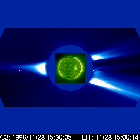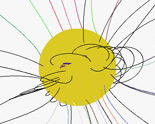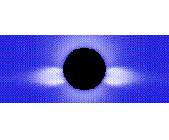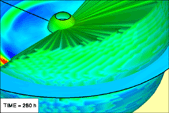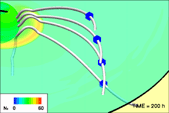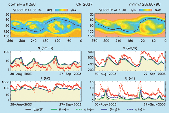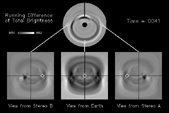 |
 |
|
|
|
|
|
|
|
|

Sun-to-Earth Modeling
Models involving the fully connected Sun-to-Earth system make it
possible to simulate geomagnetic activity caused by solar activity with
one code.
- Center for Space Environment Modeling (CSEM)
Interdisciplanary research institute at the College of Engineering at the University of Michigan sponsored by MURI developing computational models of near-earth space weather. - SolarCISM
The Center for Solar Weather Modeling is an NSF-sponsored Science and technology Center (STC) aiming to develop a model of the conditions in space between the Earth and Sun based on solar activity. The goal is to provide a model that can be used for space weather analyses and forecasting.
Coronal Modeling
3D MHD models of the corona will help link IMPACT solar wind measurements to the Sun.
Solar Wind Modeling
| Results from a model of the solar wind based on solar magnetic field observations. Top panels show contours of solar wind velocity near the boundary of the solar wind (upper left) and at 1 AU (upper right). The lower panels show comparisons of model results (lines) with ACE data. | |
| Simulation of how CME would be viewed from Earth and from the two STEREO spacecraft (Dusan Odstrcil, Unversity of Colorado) |

